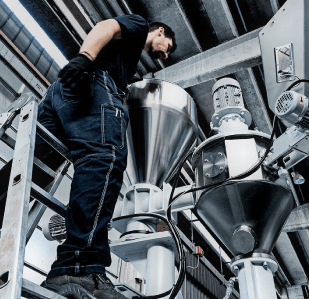Brief summary
There are ongoing and often heated debates among industry professionals regarding which type of pipe is the most suitable and effective to work with for various types of projects. These discussions take into account factors such as material properties, cost, and application-specific requirements to determine the optimal choice.
HDPE vs PVC – HDPE advantages and disadvantages
Here, we provide an impartial comparison of the pros and cons of HDPE versus PVC pipe. HDPE pipe has been the material of choice for trenchless installation practices almost since the technology first appeared in the mid-to-late 1960s.
Common Features
Durability
PVC is a fairly durable vinyl polymer, while HDPE is a thermoplastic made from petroleum. They are both considered plastics. When comparing failure ratings, PVC has shown to be higher than HDPE. PVC has a rating of one in 48,650 events compared to HPDE with one in 10 million. These failure events included rain stress, wind, heat or cold. Therefore, one of the advantages of HDPE pipes is that they are known to be more durable in these events. PVC is more useful in one-time projects.
Joining
When joining PVC, a gasket or gluing sealant must be used. It can also be joined underwater while HDPE cannot. HDPE is joined by heat fusion (see our Push/Lock Couplings). However, HDPE is able to withstand and dampen more shock waves than PVC.
Another of the advantages of HDPE pipes is that when covering fiber builds, HDPE works best for many reasons:
- HDPE can handle season stress (heat and cold). Low temperature impact.
- HDPE can withstand 20 years or more of the sun’s UV rays, while PVC may not last three years.
- HDPE is more resistant to salt, sand, dust and corrosive materials.
Installation
HDPE can be installed in the following ways:
- Open trench
- Directional bore
- Horizontal bore
- Drop burial
PVC can be installed in the following ways:
- Open trench
- Drop burial
- HDPE pipe
Which one’s better, PVC or HDPE?
When looking for a more suitable pipe for lower pressure, HDPE is more efficient. HDPE is softer and more bendable and has a tight bending radius.
However, HDPE is a strong choice for both pressure and non-pressure piping application. HDPE is known for its flexibility, chemical stability and high strength-to-density ratio. HDPE offers a leak-free system via heat fusion joints. While PVC is a stronger and stiffer material, it makes it suitable for direct burial and trenchless installation.
The stiffness of PVC pipe allows its direct connection to mechanical valves, non-plastic fittings and various other water and wastewater connections. One of the biggest issues with mechanically joined traditional pipes (PVC) is the high incidence of background leakage. This is water that leaks out of the pipe through pipe joints. It is estimated that in the United States, about 14% of drinking water is lost each day due to background leakage! This represents more than 12 million gallons of water a year in a city of 100,000. HDPE pipes, and their fittings and connections, offer a distinct advantage in that they can be used to create leak-free joints that can prevent this issue.






